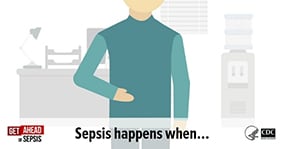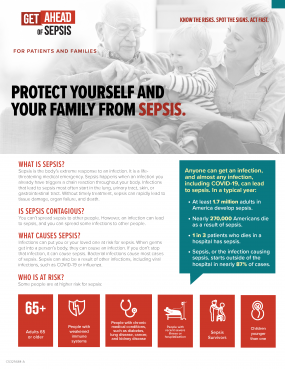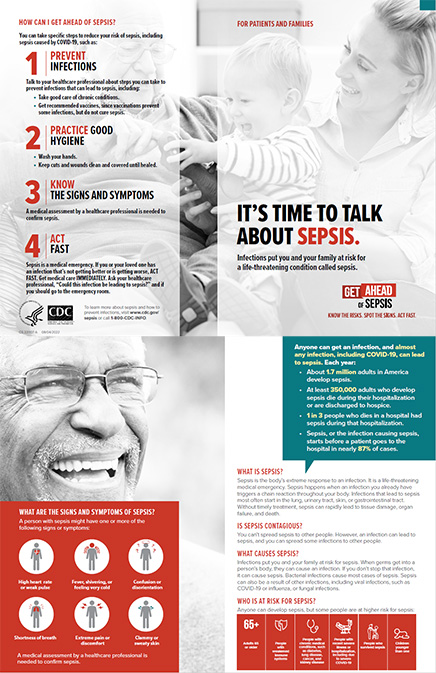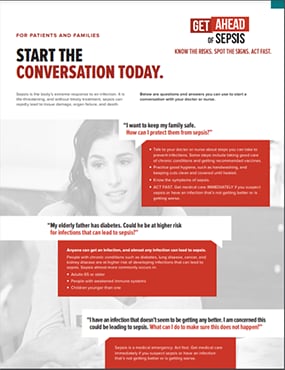What is Sepsis?
Anyone can get an infection, and almost any infection, including COVID-19, can lead to sepsis. In a typical year:
- At least 1.7 million adults in America develop sepsis.
- At least 350,000 adults who develop sepsis die during their hospitalization or are discharged to hospice.
- 1 in 3 people who dies in a hospital had sepsis during that hospitalization
Sepsis is the body’s extreme response to an infection. It is a life-threatening medical emergency. Sepsis happens when an infection you already have triggers a chain reaction throughout your body. Most cases of sepsis start before a patient goes to the hospital. Infections that lead to sepsis most often start in the lung, urinary tract, skin, or gastrointestinal tract. Without timely treatment, sepsis can rapidly lead to tissue damage, organ failure, and death.
What causes sepsis?
Infections can put you or your loved one at risk for sepsis. When germs get into a person’s body, they can cause an infection. If you don’t stop that infection, it can cause sepsis. Bacterial infections cause most cases of sepsis. Sepsis can also be a result of other infections, including viral infections, such as COVID-19 or influenza, or fungal infections. Most people who develop sepsis have at least one underlying medical condition, such as chronic lung disease or a weakened immune system. Nearly a quarter to a third of people with sepsis had a healthcare visit in the week before they were hospitalized.
Adults 65 or older
People with weakened immune systems
People with chronic medical conditions, such as diabetes, lung disease, cancer, and kidney disease
People with recent severe illness or hospitalization

People who survived sepsis
Children younger than one
![]()
High heart rate or weak pulse
![]()
Confusion or disorientation
![]()
Extreme pain or discomfort
![]()
Fever, shivering, or feeling very cold
![]()
Shortness of breath
![]()
Clammy or sweaty skin
People who might have sepsis should be urgently evaluated and treated by a healthcare professional.
What should I do if I think I might have sepsis?
Sepsis is a medical emergency. If you or your loved one has an infection that’s not getting better or is getting worse, ACT FAST.
Get medical care IMMEDIATELY. Ask your healthcare professional, “Could this infection be leading to sepsis?” and if you should go to the emergency room.
If you have a medical emergency, call 911. If you have or think you have sepsis, tell the operator. If you have or think you have COVID-19, tell the operator this as well. If possible, put on a mask before medical help arrives.
With fast recognition and treatment, most people survive. Treatment requires urgent medical care, usually in an intensive care unit in a hospital, and includes careful monitoring of vital signs and often antibiotics.



